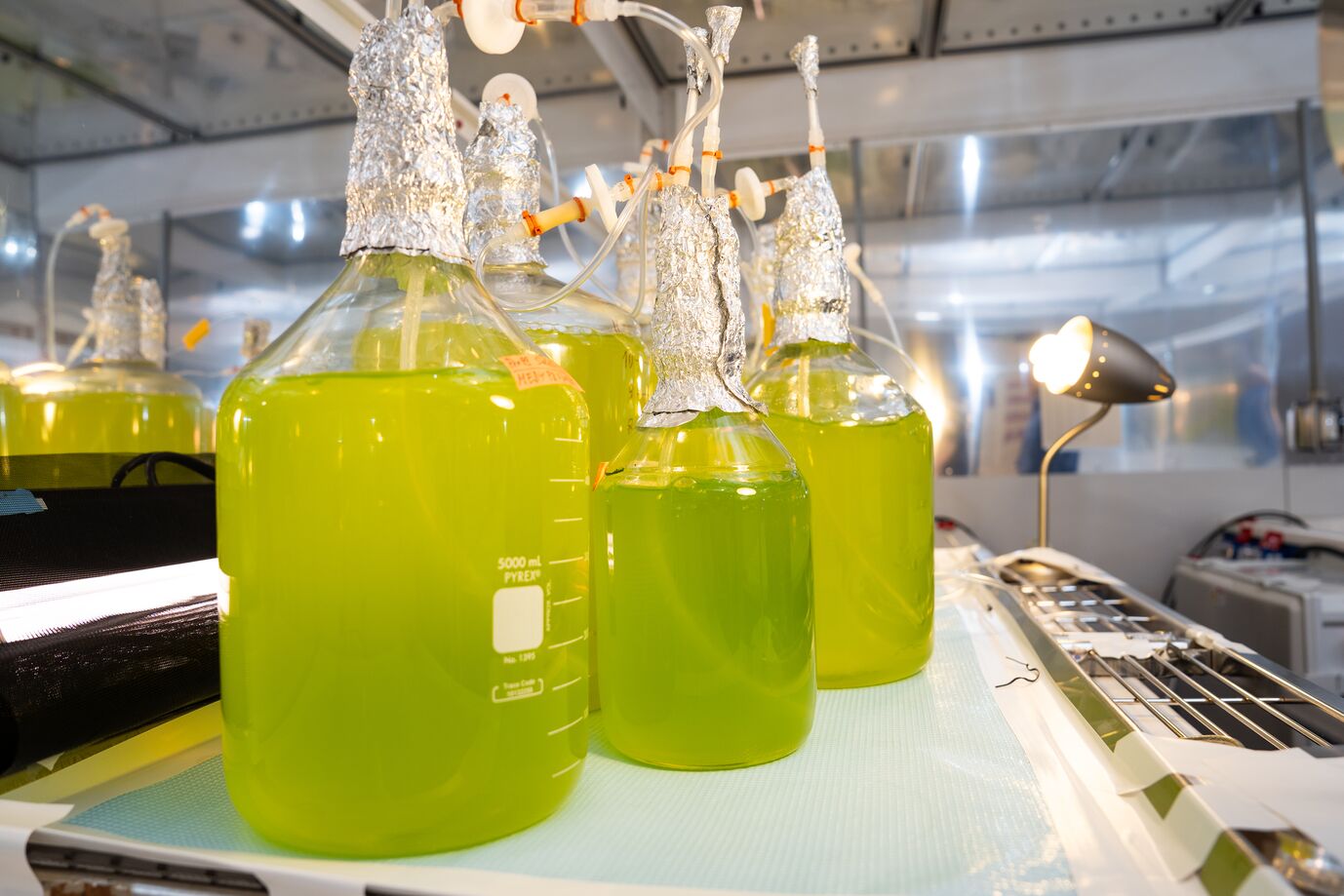
Predictive
Phenomics
Predictive
Phenomics
Understanding, predicting
and controlling the phenome
Understanding, predicting
and controlling the phenome
This community of microbes is a balanced set of five bacterial strains that don’t out compete one another but instead act cooperatively. Studying the phenomes of interacting bacterial communities can help us predict how to harness this power toward valuable biosystem-driven advances for humanity.
Photograph by Andrea Starr | Pacific Northwest National Laboratory
Predictive phenomics allows us to harness the power of biological systems. This approach integrates understanding the molecular foundations of function and precisely predicting how organisms will react to changes in their environment or genome. It’s more than a scientific method—it’s a gateway to a future where we can design and modify biological systems with unprecedented precision. Its impact could be profound, leading to advances in bioenergy, and biomanufacturing, novel treatments for diseases, innovations for extracting and safeguarding resources in our environment, and development of high-tech sensors for national security.
As we entered the last decades of the 20th century, a remarkable shift occurred in the life sciences. We began to unlock the secrets held within the DNA of various organisms—the genetic code that orchestrates the very essence of life.
The strides made during the “genome revolution” sparked an interest in harnessing and directing the capabilities of microbial systems. These microscopic powerhouses hold the key to solving some of our world's most pressing issues, including environmental sustainability, human health, and the creation of new chemicals and materials.
Traditionally, scientists start with the genetic code of microbial systems and attempt to deduce their functions from the sequences of genes. This approach, while useful, does not fully capture the complexity of microbial functions. Microbial functions are the result of many molecular and environmental interactions that are influenced by many factors—temperature shifts, environmental stresses, genetic changes, cellular feedback loops, and even communication with other organisms. To truly harness the power of microbes, it is critical for us to observe, measure, and ultimately predict how their functions are driven by this set of complex molecular and environmental interactions.
Starting with the end in mind

At Pacific Northwest National Laboratory (PNNL), we're tackling this challenge head-on with an innovative approach we call predictive phenomics.
The phenome, or collection of observable biological traits within an organism, is shaped by the way its genes interact with its environment (i.e., genotype + environment = phenotype). This landscape of interactions is dynamic and rich, and understanding it all is still in its infancy. But it’s important, and it’s where we’re starting.
Instead of focusing solely on gene sequences, we identify a phenome of interest. Using a variety of technologies—from traditional mass spectrometry to chemical biology and bioimaging, which allow us to see at the smallest of scales—researchers analyze the dynamic molecular components and interactions in a microbe that result in these traits and integrate our findings with environmental information. This fusion of data provides us with profound insights into the multitude of factors beyond genetic information that lead to the functions we’re studying.
Investing in Ourselves

Predictive phenomics is a paradigm shift from genomics-based approaches. PNNL has unparalleled molecular measurement capabilities, data science and AI expertise, and foundational experimental systems to leverage in this endeavor. With a new internal investment established in 2022, PNNL created the Predictive Phenomics Initiative to focus a team of researchers on accelerating discovery of the molecular function of specific biological systems, such as viruses, proteins, and microbes. Learn more about these projects and others presented at the inaugural PNNL-hosted Predictive Phenomics Conference in 2025.
Predictive phenomics is a scientific superpower. By understanding phenotypes—and being able to predict them—we can do phenomenal things.




